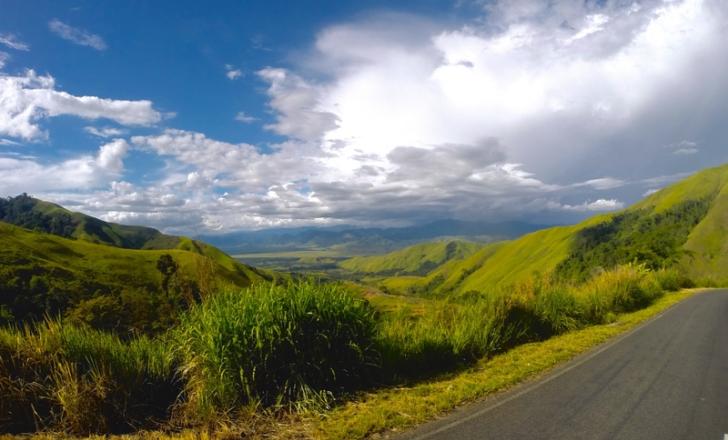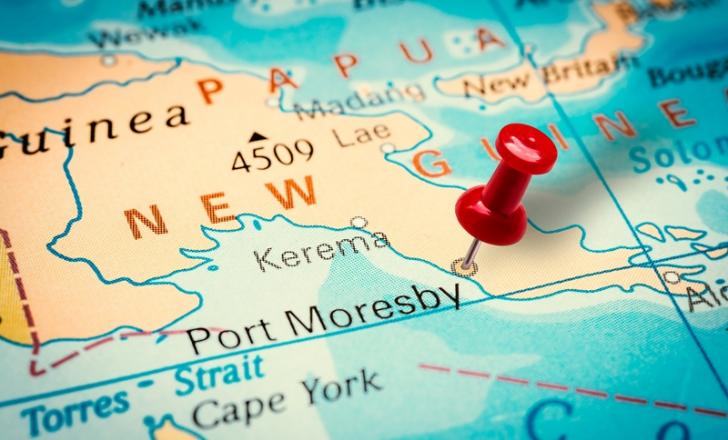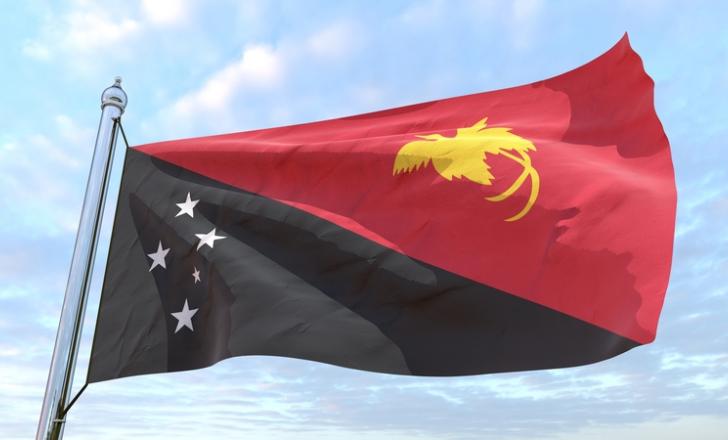
Papua New Guinea is working to improve 71 bridges along the Highlands Highway under the second tranche of the Sustainable Highlands Highway Investment Programme.
The bridges will be between Kagamuga Airport in the city of Mount Hagen and Nadzab Airport in the city of Lae – a distance of around 320km and along the economically important Highlands Highway, the main land transport corridor between the Highlands Region and the coast.
Lae is the capital of Morobe Province and is the second-largest city in Papua New Guinea, with a population of just over 100,000. It is located near the delta of the Markham River and at the start of the Highlands Highway. Lae is the largest cargo port of the country and is country’s industrial hub of Papua New Guinea. The city is known as the Garden City and home of the University of Technology.
Mount Hagen is the country’s third largest city and has a population of more than 46,000. It is the capital of the Western Highlands province and is located in the large fertile Wahgi Valley in the centre of Papua New Guinea.
Work, including complete replacement of 45 bridges, started in 2020 and should be finished by the end of 2025. One bridge will be doubled in width and all of the bridges will have improved and safer stair access to the water underneath, according to a report by The National newspaper.
The Sustainable Highlands Highway Investment Programme is backed by several international development banks. It aims to improve and maintain over 400km of the Highlands Highway and incorporate road safety features and logistics services for agriculture, a major economic sector for the nation. Papua New Guinea occupies the eastern half of the island of New Guinea and offshore islands in Melanesia, a region of the southwestern Pacific Ocean north of Australia. Its capital, located on southeastern coast, is Port Moresby. The country is the world's third largest island country with an area of 462,840km2.
Mountainous terrain
Transport in Papua New Guinea is heavily limited by the country's mountainous terrain and air transport remains the most important form of transport for people and freight. Even the capital Port Moresby and Lae have no reliable and continuous road connection, furthering the importance of air travel in this country of an estimated nine million people. The country has more than 500 small airstrips.
Most of the 700km Highlands Highway, sometimes called the Okuk Highway, is a two-lane road that suffers from frequent damage from landslides and major pothole issues. In 2006 the eastern section of the highway (Lae to Goroka) was resurfaced by the Australian government AusAid programme. Several Japanese and Taiwanese projects have contributed to rebuilding or replacement of important bridges. Meanwhile, the Porgera Gold Mine, a major user of the Highlands Highway for transporting products and equipment to and from the port of Lae, reportedly spends much time and money maintaining the road.
Late last year, James Marape, Papua’s prime minister, along with PNG politicians, business leaders and key road stakeholders met to discuss the Connect PNG strategy, a plan to increase strategic connections across the country’s four geographic regions over the next 20 years.
Jon Philp, Australia’s High Commissioner to Papua and equivalent of an ambassador, said his country fully backs the Connect PNG Development Infrastructure Programme. He said Australia’s investment in infrastructure in Papua New Guinea is the largest single sector of Australia’s development assistance.
“At the heart of our partnership with PNG, driving these investments and developments, are the people,” said Philip. “High quality road construction contributes to safer roads, improved connectivity, increased access to health, education and financial services and economic opportunities for the people of Papua New Guinea.”
Australia through the PNG-Australia Partnership is cooperating with other development partners such as the World Bank, Asian Development Bank and the Japan International Cooperation Agency on long-term transport infrastructure projects in Papua New Guinea.
Road authority
It was only in 2020 that the government established an authority to manage roads. The Road (Management and Fund) Bill 2020 set up the PNG Road Fund Authority to be responsible for maintenance, safety and rehabilitation of the National Road Network. This network is about 8,760km long, according to government and business data collected by the UN’s World Food Programme and published as Logistics Capacity Assessments, LCAs.
Of this, around 3,335km of roads are designated “roads of national importance”, often called “priority roads”. These are the focus of most maintenance and improvement efforts. Importantly, only about 2,647km of all of Papua’s roads are sealed roads - almost all in the national road system.
The country has around 800 bridges, again because of the mountainous terrain and a multitude of river crossings in a country where a hot, humid tropical climate is experienced year round. The average monthly rainfall ranges between 250-350mm but annual rainfall in many areas exceeds 2,500mm, with the heaviest events occurring in the highlands – home to the main economic land route.
There are no reliable up-to-date traffic counts, according the LCA report. Because of little regular maintenance, some highways and most of the feeder roads are accessible only by four-wheel drive vehicles. The smaller feeder roads linking the main roads are mostly unsealed and in the rural areas the traditional bush tracks are still the only roads available.









